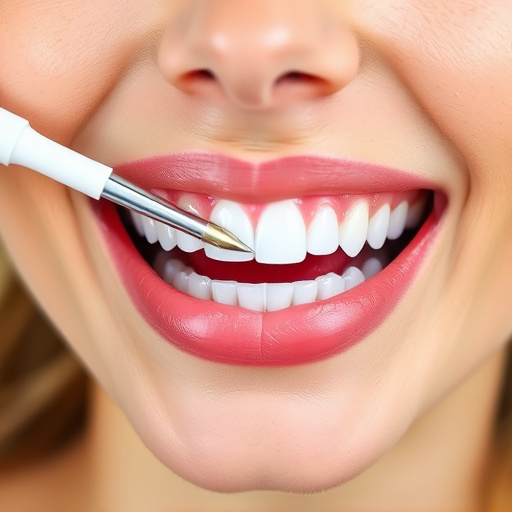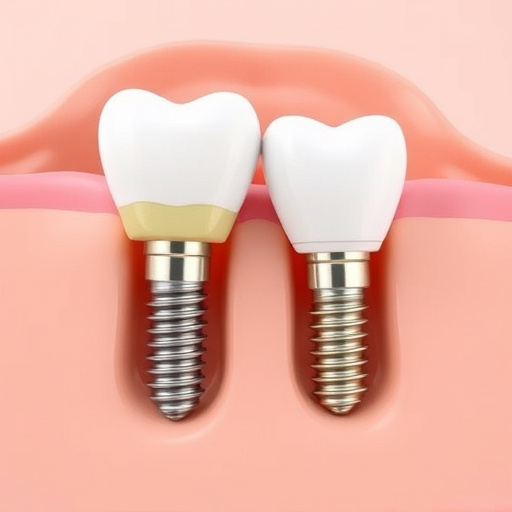Deep Clean: Unlocking Oral Health with Professional Teeth Cleaning
TL;DR:Professional teeth cleaning services are crucial for maintaining not just a beautiful smile, b…….
Welcome to an in-depth exploration of professional teeth cleaning—a vital aspect of oral healthcare that has evolved into a global phenomenon. This article aims to guide readers through the intricacies of this practice, its historical roots, and its profound impact on individuals and societies worldwide. By delving into various facets, from technological innovations to policy frameworks, we will uncover the significance of professional teeth cleaning in maintaining optimal oral health and its role in shaping healthcare landscapes.
Definition: Professional teeth cleaning, also known as dental prophylaxis or dental scaling, is a specialized oral care procedure performed by trained dental professionals, typically dentists or hygienists. Its primary purpose is to prevent and control dental plaque buildup, tartar accumulation, and associated oral health issues.
Core Components:
Dental Examination: Before cleaning, dentists conduct a thorough examination of the teeth and gums, identifying any areas of concern, such as tooth decay, gum disease, or calcified plaque deposits.
Scaling: This is the primary component where dental professionals use specialized instruments like scalers and curettes to remove plaque and tartar from above and below the gum line. Superficial stains are also eliminated during this process.
Root Planing (Deep Cleaning): For more advanced cases, root planing involves smoothing and cleaning the tooth roots to promote gum healing and reduce the depth of gum pockets, which can trap bacteria.
Flossing and Oral Hygiene Instruction: Following the cleaning, dental professionals educate patients on proper flossing techniques and oral hygiene practices to maintain the results of professional teeth cleaning.
Historical Context: The practice of professional teeth cleaning has a rich history dating back centuries. Ancient civilizations like the Egyptians and Greeks recognized the importance of oral hygiene, but their methods were rudimentary compared to modern standards. The formalization of dental hygiene as a profession began in the 19th century with the establishment of dental schools and the development of more advanced tools and techniques.
Significance: Regular professional teeth cleaning is crucial for several reasons:
Professional teeth cleaning has left an indelible mark on global oral healthcare systems, with varying levels of adoption and accessibility across regions. Here’s a glimpse into its international influence:
| Region | Access to Professional Teeth Cleaning | Key Trends | Challenges |
|---|---|---|---|
| North America | High; advanced dental care infrastructure | Growing emphasis on preventive care, with regular cleanings every 6-12 months | Rising dental costs and lack of insurance coverage for some populations |
| Europe | Generally accessible, with varying standards across countries | Increasing use of digital dental technologies, teledentistry gaining traction | Aging population, requiring more extensive oral care services |
| Asia-Pacific | Mixed; urban areas have better access than rural regions | Rapid adoption of modern dental technologies, driven by economic growth | Cultural attitudes towards oral hygiene and limited dental education |
| Middle East & Africa | Varies; some countries offer excellent services while others struggle | Increasing private investments in dental care, with high-end facilities emerging | Limited availability of dental professionals, particularly in rural areas |
Trends Shaping the Future:
The professional teeth cleaning market is a significant segment within the global oral healthcare industry, with various economic dynamics at play:
Market Dynamics:
Investment Patterns: Private equity firms and venture capitalists are increasingly investing in dental care startups, fostering innovation and expanding access to oral health services.
Economic Impact:
Technological innovations have played a pivotal role in enhancing the efficiency and accessibility of professional teeth cleaning:
Ultrasonic Scalers: These devices use high-frequency vibrations to disrupt plaque and tartar, allowing for more efficient scaling and improved patient comfort.
Air Polishing (Aerosil): A non-invasive technique that uses a mixture of water and abrasive particles to gently remove surface stains and plaque.
Laser Dental Cleaning: Lasers are employed to precisely remove dental deposits, offering a more targeted and effective cleaning method for specific conditions.
Digital Imaging and 3D Modeling: Advanced imaging technologies enable dentists to create precise models of teeth and gums, aiding in treatment planning and visualization.
Future Potential: Emerging technologies like smart brushes, AI-driven oral health apps, and advanced robotics hold promise for further revolutionizing at-home and professional oral care practices.
Regulatory frameworks play a crucial role in ensuring the quality and accessibility of professional teeth cleaning services:
Key Policies and Regulations:
Licensing and Certification: Dental professionals must obtain licenses and certifications to practice, ensuring they meet educational and competency standards.
Public Health Guidelines: Governments issue guidelines for oral health promotion and disease prevention, often recommending regular dental check-ups and cleanings.
Insurance Coverage: Policies vary across countries, influencing patients’ access to affordable cleaning services. For example, some nations have universal healthcare systems that cover routine dental care.
Influence on Development: Strict regulations can drive innovation in dental product development and service delivery, ensuring patient safety and quality care. However, over-regulation may hinder access, especially in underserved regions.
Despite its numerous benefits, professional teeth cleaning faces several challenges that require attention and strategic solutions:
Main Challenges:
Cost and Accessibility: High treatment costs and limited access to dental care, particularly in rural or low-income areas, can deter individuals from seeking professional cleanings.
Hygiene Standards: Maintaining high hygiene standards in dental clinics is essential but poses challenges related to equipment sterilization and infection control protocols.
Patient Compliance: Encouraging patients, especially children, to adopt consistent oral hygiene practices at home remains a challenge, impacting the long-term success of professional cleanings.
Proposed Solutions:
Subsidized Dental Care Programs: Governments can implement initiatives to make dental care more affordable and accessible, targeting underserved populations.
Community-Based Dental Education: Local community programs can educate individuals about oral hygiene, fostering better brushing habits and reducing the need for frequent professional cleanings.
Enhanced Sterilization Protocols: Regular training and strict adherence to infection control measures can ensure patient safety and maintain high clinical standards.
Case Study 1: The Singapore Dental Experience
Singapore’s successful oral healthcare system serves as an excellent case study for professional teeth cleaning. The country’s comprehensive national dental program, launched in the 1960s, focused on improving access and promoting preventive care. Regular school-based dental screenings, free dental treatment for children, and community dental clinics contributed to a significant increase in oral health awareness and improved dental hygiene among Singaporeans.
Case Study 2: Teledental Revolution in Rural India
In rural India, where dental professionals are scarce, teledental services have emerged as a game-changer. Non-profit organizations partner with local clinics to provide virtual consultations, enabling patients to receive cleaning advice and guidance from remote dentists. This model has improved access to oral care for thousands of people, demonstrating the power of technology in addressing healthcare disparities.
Case Study 3: Community-Driven Oral Health Initiatives in Brazil
Brazil’s “Saude Bucal” (Oral Health) programs exemplify community engagement in promoting professional teeth cleaning. Local health workers conduct door-to-door campaigns, offering free cleanings and oral hygiene education. These initiatives have led to increased dental access and improved oral health outcomes, particularly in low-income neighborhoods.
The field of professional teeth cleaning is poised for further growth and transformation, driven by several emerging trends:
Personalized Oral Care: Advanced genetic testing and AI algorithms will enable tailored oral care plans, addressing individual risks and needs.
Digital Transformation: Mobile apps, wearable sensors, and virtual reality (VR) technologies will enhance patient engagement, education, and remote consultations.
Sustainable Dental Practices: Eco-friendly materials and processes will gain prominence, aligning with growing environmental concerns.
Growth Areas:
Specialized Services: Niche areas like cosmetic dentistry, implant surgery, and oral surgery are expected to expand, catering to diverse patient needs.
Oral Health in Aging Populations: With aging societies, there will be a heightened focus on maintaining oral health in older adults, requiring specialized care.
Strategic Considerations:
Interdisciplinary Collaboration: Partnerships between dentists, hygienists, public health officials, and other healthcare professionals can lead to more comprehensive oral health solutions.
Global Knowledge Sharing: Collaborating internationally can facilitate the exchange of best practices, ensuring global oral healthcare standards.
Professional teeth cleaning is a cornerstone of modern oral healthcare, offering profound benefits in disease prevention and aesthetic enhancement. From its historical roots to today’s technological advancements, this practice has evolved to meet the diverse needs of individuals worldwide. By addressing economic, technological, and regulatory considerations, we can ensure that professional teeth cleaning remains accessible and effective.
As we look ahead, the future holds immense potential for further revolutionizing oral care. Embracing emerging trends and implementing strategic solutions will contribute to better oral health outcomes for people everywhere. With continued dedication to research, education, and innovation, the global dental community can unlock a brighter, healthier smile for all.
Q: How often should I get professional teeth cleaning?
A: The frequency varies based on individual oral health needs. Generally, every 6-12 months is recommended, but your dentist may suggest more or less frequent visits based on your dental history and risk factors.
Q: Is professional teeth cleaning painful?
A: With modern techniques and local anesthesia, the procedure is generally comfortable. You may experience some sensitivity afterward, but pain is minimal, and your dentist can provide aftercare instructions to ease discomfort.
Q: Can at-home oral hygiene replace professional cleanings?
A: While good oral hygiene practices at home are essential, they cannot fully replace professional cleanings. Plaque and tartar buildup in hard-to-reach areas require the expertise of dental professionals for effective removal.
Q: How do I choose a dental clinic for professional teeth cleaning?
A: Look for licensed and reputable clinics with qualified staff. Read patient reviews, check their sterilization protocols, and inquire about their experience in handling your specific needs or concerns.
Q: Are there any risks associated with professional teeth cleaning?
A: As with any medical procedure, there are minimal risks. Proper training and adherence to infection control measures minimize these risks. Common side effects include temporary sensitivity and mild bleeding, which subside quickly.

TL;DR:Professional teeth cleaning services are crucial for maintaining not just a beautiful smile, b…….

Optimal oral health requires regular professional teeth cleaning appointments at a family dentistry……..